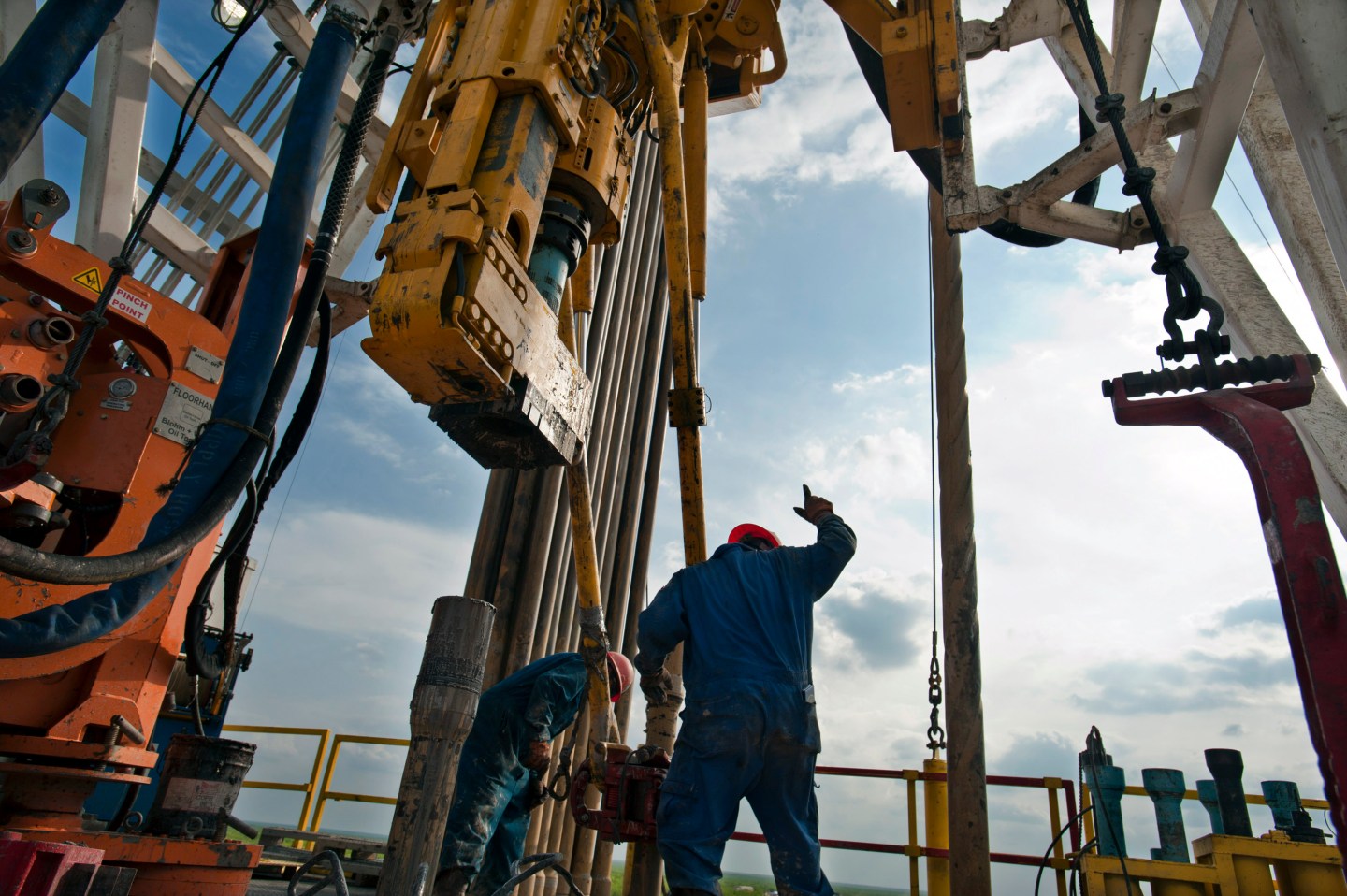From Main Street to Wall Street, Beijing to Paris, people are interested in whether oil prices will rise or fall. I suggest that we begin to examine this question by asking why oil prices dropped like a rocket from over $105 per barrel on the New York Mercantile Exchange in summer 2014 to around $47 per barrel in January 2015. We can then see if the causes of the price collapse are likely to reverse going forward.
For starters, oil prices are determined mainly by the combined behavior of oil traders on markets like the NYMEX. When traders believe that oil prices will rise, they buy oil futures in hopes of selling them later for a profit. Such buying increases oil prices, and, eventually, the price of derivatives, such as gasoline and heating oil.
As I discuss in my book, “Myths of the Oil Boom,” the oil price crash of 2014-2015 resulted from a perfect storm of developments. Global economic growth slowed worldwide most notably in China, India, Japan, and in Europe, leading the International Energy Agency to lower its forecast for global oil demand in mid-October 2014. Moreover, the US dollar reached two-year highs (because oil is priced globally in dollars, a weak dollar usually raises the price of oil).
Geo-politically, Libya stabilized and started to pump more oil, and traders became more sanguine about a nuclear deal with Iran that would prevent war in the region, lift sanctions on Iran, and free it to export much more of its oil.
Most importantly, the Saudis and other OPEC members decided chiefly in November 2014 not to cut oil production. That could have offset the extra oil production of the American oil boom, which in and of itself was pressuring prices. Saudi inaction, which was rare given the Kingdom’s historical role of at least trying to keep oil prices in a range, was the main trigger of the oil price free fall.
Since the January 2015 low in oil prices, some of the causes of the price collapse have started to reverse, which explains why oil futures recently rebounded to over $60 per barrel for the first time in five months. What can we now expect?
The global economy remains a big wild card. The strong dollar has hurt American exports and gross domestic product, but others around the world have benefited from this imbalance such as Europe where the European Commission recently raised its forecast for Eurozone economic growth. Yet, China’s oil guzzling economy is growing at its slowest pace in many years.
The US dollar has weakened a bit, which is correlated with the recent rise of oil prices, but the Federal Reserve could eventually raise interest rates, which could buttress the US dollar and continue to suppress oil prices, all things equal.
Geo-politically, recent protests at a Libyan oil port contributed to rising oil prices and that underscored Libya’s ongoing instability—a problem faced by other major producers, including Iraq, Nigeria, and Venezuela. But on the flip side and far more importantly, nuclear negotiations with Iran seem likely to succeed. Yes, it will take time for Iran to ramp up oil production, but taking war off the table should placate oil traders.
For its part, the American oil boom has lost some steam—which is probably what the Saudis wanted when they refused to buttress oil prices in 2014. Half of the American oil rigs have been shut down due to the oil price crash, leading OPEC recently to conclude that America is near an oil-output peak. And that has contributed to the recent rise in oil prices. These rigs are likely to remain shuttered unless oil prices recover in a sustained way, which will probably bring the rigs back into action.
Then there is the House of Saud. What will the Saudis do? By failing to cut their oil production, they have met their probable goals of hurting the U.S. oil boom; checking their arch enemy Iran; and instilling more discipline in OPEC. They probably think that their work is done for now. And, anyway, they need higher oil prices, as do many OPEC members, to meet their budget targets at home and to subsidize their growing cradle-to-grave society. They probably won’t take action to suppress oil prices at these levels.
Overall, then, we may expect a Goldilocks price scenario in the next six months—not too high and not too low. My guess is that all these countervailing forces will yield an average price between $52 and $68, barring major unforeseen developments.
And that’s just fine for the American and global economy. Consumers will continue to benefit from relatively lower prices, while the energy industry will not be hobbled altogether.
But whatever happens, we would be wise not to forget about greener energies and practices for a sustainable future, partly to temper our vulnerability to the vagaries of oil markets.
Steve A. Yetiv is author of Myths of the Oil Boom: American National Security in a Global Energy Market.












